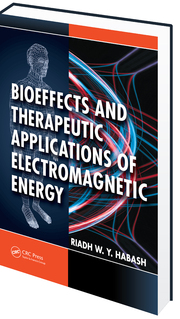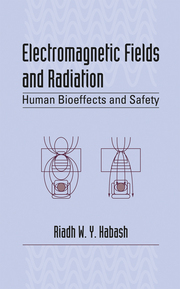|
Course Progress Lecture: Monday (16:00 to 19:00: LPR 285)
Resources
The electrification and the industrialization of modern society have resulted in widespread of a large spectrum of energy and power, communication, and medical systems. Today, we look to electricity as a primary means of creating jobs and improving the quality of life. Though electricity clearly benefits societies in countless ways including those related to health, concern has been raised about the possible adverse health effects from its generation, delivery, and use. This course support sustainability in electromagnetic energy systems, ensuring that impact on health and safety are highest priorities in the development of these technologies. The course will involve the development and application of techniques for building electromagnetic systems that promote health and characterizing health risks, as well as the analysis of options for managing those risks especially those related to electric technologies. The course will also emphasize the development of therapeutic systems, health awareness as well as risk science, an integration of fields that remains underdeveloped in Canada.
IEEE Engineering in Medicine
and Biology Society
Committee on Man and Radiation
(COMAR)
Articles
How dogs apparently defecate when their bodies are preferentially aligned North-South!
Frequently Asked Questions
1.
Electromagnetic radiations
are electromagnetic waves in the electromagnetic field. What are
the distinct features of electromagnetic radiation and
electromagnetic fields apart from frequencies ?
2.
Does both Electromagnetic
field and Electromagnetic radiation are two forms of the similar
thing or do they
have a complete
different phenomena ?
3.
Long time radiation exposure
causes bioeffects. Does long time electric fields or electricity
usage induce bioeffects ? If so is it necessary for us to limit
the use of electric fields within the society to avoid ill
effects ? Does
biological effects include any other disorders apart from
cancer?
4.
What is Maxwell’s theory on
biosystem interactions and why
is this theory complicated to apply in the biological
systems ? What are
the biological hindrances in understanding the bio-interactions
when it comes to the study of electric fields ?
5.
If the frequency is less, the
penetration of
energy inside the body is high and if the frequency is high,the
penetration of energy is less. Does it mean
that the thermal effects
affects only the skin cells . So does a man has a danger
of cell mutations only on the epidermal layer ?
If it is yes, then EMR don’t pass inside the body into
the tissue organs? But how does radiation causes breathing and
swallowing problems inside the human ?
6.
Coupling process with the use
of EMF is used in electromyography to analyse the muscle
physiology which utilises induced currents .Similarly what are
the functions/applications of thermal
noise and endogenous fields in the field of biomedical
engineering ?
7.
Electromagnetic radiation
causing reduction in the melatonin causes a lot of damage to the
human body. How melatonin reduction occurs ? If one can quantify
the levels of melatonin reduction according to the radiation
exposure ,then is it possible to conclude that electromagnetic
radiations are harmful ?
8.
What is specific absorption
rate (SAR) and on what basis it is calculated to determine the
thermal effects of electromagnetic radiation ?
9.
What is the difference
between diathermia, hyperthermia and themal ablation. All
of them are based on increasing temperature from the cell
normal body temperature to a temperature exceeding upto
45°C. Does it have the potential to cause harmfulness to the
body ?What are the benefits of using electromagnetic fields in
the ablation techniques ?
10.
What are the bolus that are
used to enhance the drug activity in the surrounding tissues ?
Does the usage of drug and bolus should possess any electric
property to aid the therapy ? What
is the setup description for simultaneous and rapidly switched
power application ?
Paper 1; Paper 2; Paper 3; Paper 4; Paper 5; Paper 6
|





